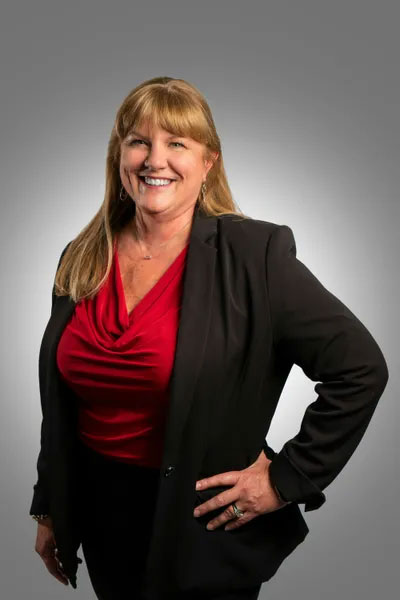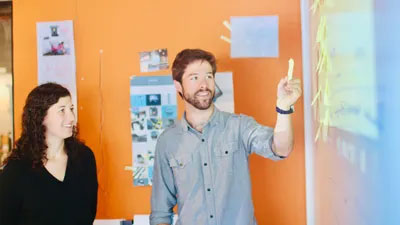
Aus Pair is a leading provider of cultural exchange and educational opportunities for more than 2 million people, with 50,000 people participating in their cultural exchange programs per year. Aus Pair currently has 15 global offices such as the USA, Germany, Poland, United Kingdom, New Zealand and Australia and works with agents in over 88 different countries.
As its managing director, Gwen looks after both Aus Pair’s outbound (sending au pairs overseas) and inbound (recruiting au pairs to work in Australia) programs.
Gwen and her team used Sales Cloud and Experience Cloud to manage their programs. However, after spending a few years with the three different partners, they still had little understanding of the Salesforce standard practice. They used only the Contact and Account Object, but when it came to managing finance, they did not use Lead or Opportunity at all. Instead, they used Custom Objects, such as Au Pair, Host Family and Match Object.
“There are lots of things that we would love to do with Salesforce that we haven’t got the time to do.”
“We have quite a detailed automation that sends out emails at certain times in the placement for both the au pairs and the host family. Some of those we have to do manually because they are not in the automation. We fixed some of the things, but we also don’t want to break things either.”
“We are looking for a solution that can make our life easier. We are not a big company, we cannot afford to have someone working on our Salesforce 24/7.”
“We have been burned so many times. We have had now a number of (Salesforce) developers that promised things but just didn’t deliver. Often, we first met with one team and later worked with another team, both didn’t seem to have a clear view of our business.”

After operating with traditional processes for more than 40 years, Aus Pair realised the need for digitalisation to personalise their customer experience, improve operational efficiency through automation and make strategic decisions with real-time data. They chose Salesforce as a platform to support this organisational change.
The company hired an IT Consulting Consulting Company that was not a Salesforce Certified Partner.
Gwen was excited about the prospect of onboarding her company to Salesforce very soon. This will be the start of the transformation in experience for her team members and customers. Unfortunately for Gwen and Aus Pair, many challenges were waiting ahead.
The decision to hire an IT Consulting Company that was not a Salesforce Certified Partner. To qualify as a Salesforce Registered Partner alone, an IT Consulting Company has to pass Due Diligence conducted by Salesforce, participate in Accelerate for Consulting Partners Program and meet the minimum requirements in terms of Salesforce training and employees’ qualifications. To hire a non-Salesforce partner, the company missed out on the opportunity to benefit from specialised expertise and dedicated support honed through years of experience and practice.

Aus Pair implemented Salesforce with the hope of improving the experience and streamlining the processes for three different types of stakeholders: host families, agents and au pairs. They also expected to achieve a clear view of their return on their investment, for example, whether a career fair was successful in bringing in a good number of au pair applications.
Aus Pair went along with their first IT Consulting Company’s plan of creating custom objects: Host Family, etc.
Gwen was full of hope thinking about the outcomes of this implementation. As it was her and Aus Pair’s first engagement with any Salesforce partner, they trusted that the partner knew what they were doing.
The decision to jump into creating custom objects without trying to make the most out of Salesforce standard processes and practices.

The first IT Consulting Company closed their business, giving Aus Pair only a month of notice. Left with an incomplete solution, Aus Pair struggled to continue BAU activities by themselves.
In a rush to find a replacement, Aus Pair quickly reached out to a Salesforce partner. They gave her their promises to fix her Salesforce org once and for all.
After spending a year with the IT consulting company and having so many expectations left unfulfilled, Gwen felt lost, but she still had high hopes for the partner they just got in touch with.
The decision to quickly hire any Consultants without performing due diligence on their track records and carefully considering if they were qualified enough to deliver a complex solution.

Unfortunately, the second Salesforce partner closed their business even more suddenly. Once again, Aus Pair struggled to continue BAU activities by themselves.
Gwen was introduced to another Salesforce partner, an implementation partner of the year. The CEO only engaged with her company once, then delegated the engagement and the work of supporting Aus Pair to other staff members, whom Gwen later realised were freelancers hired by the Salesforce partner.
Gwen became doubtful about the new partner’s work. She and her team were extremely dissatisfied with the portals for both au pairs and agents. The only comfort for her was that the host family process seemed to be getting there, though the portal still required improvements to look more user-friendly.
The decision to continue engaging with a partner who gave them disconnected support and did not have effective communication and collaboration between their different teams.

The support from the previous partner was incomplete and Aus Pair still needed help to fix some connections and automation, update email templates, and make the host family portal more user-friendly. Besides, the business processes for agent onboarding and management as well as au pair recruitment were very manual, which became a roadblock once they decided to scale their business.
Dissatisfied with the previous partner’s work ̣̣(again), Aus Pair reached out to Salesforce AE and was introduced to Girikon.
Having been disappointed 3 times in a row by 3 different Salesforce partners (or IT consulting companies), Gwen had grown very sceptical of the Salesforce ecosystem in general. She would like to take things slowly and carefully with Girikon because her company had had “a number of (Salesforce) developers that promised things but just didn’t deliver.”

At the same time, Aus Pair had been planning to bring on a new Outbound program: Highschool, for a while, but the plan was postponed. The reason was without the Lead and Opportunity objects, Aus Pair did not have an automation process for tracking leads and converting them into opportunities, thus relying heavily on spreadsheets to track leads. The rollout would have required hours of manual tasks for their staff members, which Aus Pair could not afford.
Girikon reviewed Aus Pair’s Salesforce Architecture and suggested that their less-than-ideal non-standard Salesforce Architecture was the reason why it had been taking them so long to achieve streamlined processes and automation. They had missed out on Salesforce standard functionalities such as Flows and Triggers with unsuitable custom objects. All the work that the second and third partners did was patching up the system that would not work for them in the long term, that was why Aus Pair had yet to see any significant improvements. Therefore, it would be a big mistake to replicate their current program for the new one and not to fix their architecture.
Gwen and her team were understandably frustrated with the previous partners. She was also overwhelmed with the amount of work, time and money involved if they wanted to fix their Salesforce system once and for all one more time.

To make the most of their Salesforce platform, Aus Pair would need to overhaul their architecture.
Aus Pair could not afford to do an overhaul of their architecture. They decided to ask Girikon’s help in fixing some BAU issues so that they could operate for a couple of months with Salesforce. Meanwhile, her team was evaluating other alternative CRMs in terms of license cost, implementation and support. Once their licenses expired, they would move to another CRM.
Gwen was torn as Girikon showed her the beauty of the Salesforce platform and what she could achieve by using Salesforce’s standard functionalities. To make the full use of the platform, her organisation would need to fix the whole architecture, which they could not afford as they had already spent a fortune on the previous 3 partners. Aus Pair had to make the hard decision of leaving Salesforce once their licenses expired.